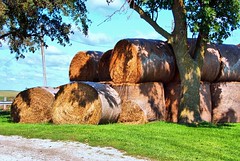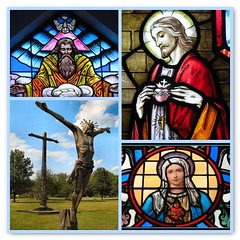The New York Times examined what appears to be a rise in violent behavior in women’s sports:
Brittney Griner, Baylor’s 6-foot-8 freshman center, was supposed to deliver her transformative moments by slamming a basketball through the rim, not punching an opponent in the face.
Yet, Griner’s most visible performance came not while displaying her exquisite skills, but by breaking the nose of Texas Tech’s Jordan Barncastle after being slung about the lane this month. Griner received a two-game suspension but is eligible for the N.C.A.A. tournament, which began here Saturday for Baylor.
It was the latest of several highly publicized moments of violent behavior in women’s college basketball this season. A reported tripping incident led to players from Georgetown and Louisville trading punches before a game in January. A male coach and a female player from Trinity Valley Community College in Texas were arrested in a postgame episode in February after a tirade over officiating and a confrontation with the campus police at a rival college.
These incidents followed the infamous soccer confrontation last fall in which Elizabeth Lambert of New Mexico yanked a Brigham Young player down by her ponytail.
The Times turned to sports sociologists to explain whether these incidents are part of larger trend, as well as what may be causing them:
So what is going on? Experts say they cannot be precisely sure. Little research has been done on excessive behavior of elite female athletes. The N.C.A.A. did not respond to a question about whether statistics were kept but called violent acts “isolated” and said they would not be tolerated.
“Only time will tell if this is an aberration, but what I think is a clear trend, as the stakes get higher in women’s sports, you see more pressure to win,” said Mary Jo Kane, the director of the Tucker Center for Research on Girls and Women in Sport at the University of Minnesota.
“This could be a natural progression to women entering into big-time college sports. You take the bad with the good; you take sold-out arenas with academic scandals. For us to think that women would enter the big time and have it be pristine and without controversy is naïve.”
Baylor Coach Kim Mulkey said that she did not believe violence had escalated in women’s basketball since her playing days at Louisiana Tech in the early 1980s, but that it was more likely to be exposed during a 24/7 news cycle.
At the same time, overall coverage of women’s sports has declined on network news and on ESPN, said Michael Messner, a professor of sociology and gender studies at Southern California who tracks television coverage.
Messner cautioned that these incidents could be less reflective of a disturbing pattern than an echoing of misbehavior that is blown out of proportion, given that it is reported against a backdrop of “almost no women’s coverage at all.”
Experts also weighed in on the potential consequences for women’s sports:
Still, advocates of women’s sports are concerned that such untoward behavior could spur opponents of Title IX, the gender-equity legislation that facilitated great participation of female athletes after its passage in 1972, to try to roll back gains that women have made.
“Is there going to be a gender backlash, where some people say, ‘We give these opportunities to girls and they’re not deserving of them?’ ” said Kristine Newhall, a doctoral candidate in women’s studies at the University of Iowa and a co-founder of the Title IX Blog.
Sports cannot be divorced from gender roles and stereotypes, Kane said. Women will probably be much more restricted in the type of aggressive behavior permitted by society, she said, noting for instance that checking is not allowed in women’s hockey.
“Physical intimidation and violence is central to the sports experience of males,” Kane said. “That is not yet the case for women. I don’t think it will become that. If it does, I hope I’m not around to see it.
Newhall argues that we shouldn’t limit our concern to violence in women’s sports:
The conversation should move beyond whether women are increasingly behaving like men to a broader examination of a college sports culture that is perhaps fostering an increase in violence and dirty tactics, said Newhall, the doctoral candidate.
“What kind of athletic department environment is being fostered that clearly indicates it’s so important that you have to yell at the refs and get into fights?” Newhall said.
“Why did a Georgetown player trip a Louisville player? That’s third-grade behavior. This is a game.”



 God is really popular in the U.S., reports the
God is really popular in the U.S., reports the 
